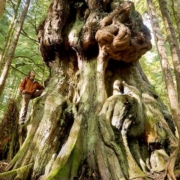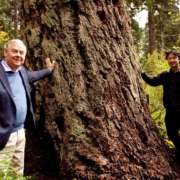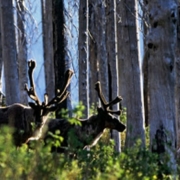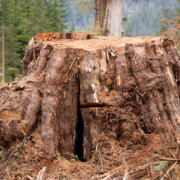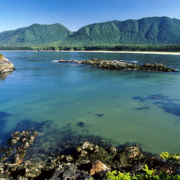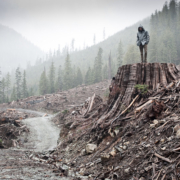VANCOUVER – British Columbia’s political leaders made Earth Day the backdrop to their campaigning Monday, using environmentally-themed events that said as much about their approaches as the substance of their announcements.
NDP Leader Adrian Dix was in Environment Minister Terry Lake’s Kamloops riding to broadly imply a government led by him would likely put a stop to the proposed twinning of the Kinder Morgan pipeline through Burnaby, B.C., to the Burrard Inlet off Vancouver.
Dix said he would await the results of the necessary reviews held into the project that would triple the capacity of the Trans Mountain pipeline, but he added: “We do not expect Vancouver to become a major oil export port as appears to be suggested in what Kinder Morgan is proposing.”
In the past, Dix has taken a similar stance on the development of the Northern Gateway pipeline, saying an NDP government would opt out of a joint federal review already underway for more than a year and conduct its own environmental probe. Dix has also said in the past he is opposed to the project.
Liberal Leader Christy Clark took her campaign to two Vancouver-based environmental tech companies to talk about jobs the green economy can provide.
Solegear Bioplastics makes plastics from plants instead of oil. The company says in its promotional material that its products, which can be used in everything from packaging to office furniture and toys, are compostable and non-toxic.
The second company, Saltworks Technologies Inc., has developed desalination technologies that have been used by customers as diverse as NASA and the Alberta oil patch.
“Clean tech is creating the jobs of tomorrow,” Clark said after touring Saltworks, which employs 40 people and last year, was named to the Global Cleantech 100, a list produced by a global research and advisory firm.
“The NDP would stifle this kind of innovation. We know they don’t understand the economy, and we know that they would move backward on the environment, too. They have opposed policy after policy that we have brought in to protect B.C.’s environment and spur innovation.”
In a rare glimmer of agreement, both leaders expressed doubts about the Pacific Carbon Trust, the agency that was created with the goal of turning B.C. into one of the world’s leading carbon-neutral economies.
Critics, including the B.C. auditor general’s office, say the agency is almost 99 per cent taxpayer funded — $14 million — and forces schools, hospitals and other public entities to spend hundreds of thousands of dollars on carbon credits, while private businesses sell their credits for cash.
Dix said Monday he would eliminate the carbon trust. He said public institutions have paid millions of dollars into the program, while private companies get money in turn for simply listing an inventory of uncut forests or unused gas projects.
“The government’s view on carbon-neutral government is to take money from cash-starved hospitals and give it to big polluters,” Dix said. “We think that money should be kept to support public institutions.”
He said an NDP government would have public institutions pay to offset their carbon emissions, but the money would be used to fund green projects.
The NDP also proposes to take $30 million in accrued earnings in the current Pacific Carbon Trust account and use the money for energy efficiency projects in the public sector.
Clark agreed the Pacific Carbon Trust hasn’t worked the way it was supposed to and said if she wins the election, her government would review the program.
“It hasn’t worked that well,” she said.
But she said the NDP has repeatedly opposed efforts by the Liberals to confront environmental problems.
Dix said Monday, though, that a government led by him would seek to meet the Liberals’ legislated greenhouse gas emissions targets. The Liberals under former premier Gordon Campbell pledged to reduce greenhouse gas emissions by one-third by 2020.
In a news conference near the banks of the North Thompson River in Kamloops, Dix said an NDP government would invest $120 million over the next three years to fight climate change in urban and rural communities.
Much of that money would come from the NDP’s earlier announcement to shift revenues from the carbon tax, which currently go to tax cuts, to transit projects and green initiatives.
For their part, B.C. Conservatives issued a news release saying any talk of ending the Pacific Carbon Trust is thievery from their own long-held position.
“I’m pleased that Adrian Dix and the NDP continue to steal our policies,” leader John Cummins said in a news release.
But he slammed Dix’s commitment to expanding the carbon tax, saying the Conservatives would end that too.
The Ancient Forest Alliance, too, used Earth Day to take aim at the NDP’s environmental stance on forestry, which was outlined last week.
Ken Wu, the group’s executive director, said it’s hard to tell what Dix’s announcement last week on protecting old-growth means.
“The NDP’s environment platform is like a blurry moving sasquatch video in regards to potential old-growth forest protections and park creation — you can’t discern if it’s real and significant, or if it’s just Dix in a fake gorilla costume running to get attention,” said Wu.
“We need the NDP to commit to a science-based plan to fully protect BC’s endangered old-growth forests on Crown lands, to ensure sustainable second-growth forestry, and to commit to a B.C. park acquisition fund to purchase and protect endangered ecosystems on private lands.”
Earlier in the day, Clark appeared on a Vancouver talk show and sparred with the host about her government’s latest budget.
The Liberal party has staked its political fortunes on a balanced budget by the end of this fiscal year, but the NDP claimed the budget is actually at least $800 million in deficit. The NDP has said it would not balance B.C.’s books until the end of their four-year mandate if they were to be elected.
“Whether or not the budget is balanced isn’t based on what people believe or what municipal managers believe,” the premier said. “Go ask Moody’s. … they said it was balanced. These are the world’s experts. Dominion Bond Rating said the budget was balanced, again, the world experts in this.”
A few hours later, Clark dialed back her claim.
“What they say is we have a superior record of fiscal management and they say that our revenue targets are absolutely on,” Clark said. “In contrast, the NDP say our budget isn’t balanced because they say our revenue targets are all out, well, the NDP isn’t telling the truth about that.”
In a report issued April 12, Standard & Poor’s affirmed the province’s AAA rating but did not proclaim the budget balanced.
Company analyst Paul Judson said the incumbent Liberal government introduced a budget with a plan to bring the province’s operating budget “back into balance” in fiscal 2014.
Rating agencies are “agnostic,” he said.
But Helmut Pastrick, chief economist for the Central 1 Credit Union, said while the reports are not an endorsement of any political party or government, they could be considered a warning about economic direction.
“Perhaps its just a cautionary note, if you will,” Pastrick said.
In its March 26 report, Toronto-based Dominion Bond Rating Service confirmed the province’s high rating on long- and short-term debt, but also noted that the budget measures may not be implemented before the May 14 vote.
“Nevertheless, the fiscal progress made to date and a relatively low debt burden in relation to peers provide British Columbia with sufficient flexibility within its current ratings, be it to withstand further economic malaise or a potential relaxation in fiscal discipline,” said the report by Travis Shaw, vice-president of public finance.
Moody’s Investors Service affirmed an AAA rating in its April 4 report, citing the province’s “strong fiscal flexibility and track record of prudent fiscal management.”
Neither Moody’s nor DBRS declared B.C.’s latest budget to be balanced.
Link to Maclean’s online article: www2.macleans.ca/2013/04/22/earth-day-forms-backdrop-to-b-c-election-campaign/

